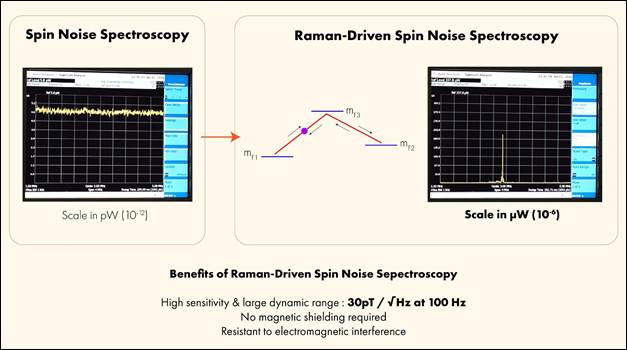In a pioneering development poised to reshape magnetic field sensing, researchers at the Raman Research Institute (RRI), under the Department of Science and Technology (DST), have introduced a novel technique that brings quantum magnetometry out of the lab and into the field. The advancement, based on Raman-Driven Spin Noise Spectroscopy (RDSNS), enables highly sensitive magnetic field measurements without requiring bulky magnetic shielding or ultra-quiet laboratory environments.

A Leap Beyond Traditional Limitations
Conventional high-sensitivity magnetometers—such as Optically Pumped Atomic Magnetometers (OPAMs) and Spin Exchange Relaxation Free (SERF) magnetometers—are lauded for their precision, but they come with critical limitations: narrow dynamic range, sensitivity to noise, and the need for sophisticated magnetic shielding. These constraints hinder their application in real-world scenarios, from outdoor explorations to clinical diagnostics.
RRI’s RDSNS-based quantum magnetometer addresses these challenges head-on.
How RDSNS Works
At the core of this technology lies a remarkably simple yet powerful idea: using laser light to detect quantum spin noise in rubidium atoms. These spin fluctuations—tiny jitters inherent in quantum systems—are influenced by magnetic fields. By observing how the spin noise spectrum shifts in response to external fields, researchers can deduce the strength and direction of magnetic fields without any physical interaction or disturbance to the atoms.
“We have combined high sensitivity with an unusually large dynamic range—something that is extremely difficult to achieve,” noted Sayari, lead author and PhD researcher at RRI.
Unlike traditional magnetometers, this method offers:
-
Broadband capability
-
Fast time response
-
No requirement for magnetic shielding
-
Resistance to electrical and mechanical noise
-
Fully optical and compact architecture
Technical Performance and Innovations
The RRI device achieved an impressive sensitivity of 30 picotesla per root hertz at 100 Hz, matching the performance of more complex and shielded systems. Remarkably, it maintained this level of performance in the presence of stray magnetic fields and ambient RF noise—conditions that typically degrade the effectiveness of other magnetometers.
Key Technical Highlights:
-
No moving parts: Fully optical system with enhanced stability.
-
High dynamic range: Performs accurately from weak to strong magnetic fields.
-
Miniaturization potential: Designed for compactness and future MEMS integration.
-
Field deployability: Usable in industrial, clinical, and outdoor settings.
Applications Across Fields
The versatility and robustness of RDSNS open doors to a wide spectrum of applications:
Medical Imaging
-
Could serve as a non-invasive, compact alternative to MRI.
-
Silent, real-time scanning of brain and nervous system activity.
Geophysical Prospecting
-
Detect underground magnetic anomalies to locate mineral or fossil fuel deposits.
Aerospace and Planetary Science
-
Ideal for space missions where weight and resilience are critical.
-
Enables study of magnetic environments around celestial bodies.
Quantum Research
-
The device could be extended to explore quantum phase transitions and interatomic interactions in controlled environments.
National Quantum Mission and Future Plans
This innovation emerges under the auspices of India’s National Quantum Mission, reflecting the country’s growing global footprint in quantum technologies. Dr. Saptarishi Chaudhuri, head of RRI’s Quantum Mixtures (QuMIX) Lab, emphasized the importance of developing next-generation quantum sensors using atomic systems.
The team is now focusing on:
-
Phase-locked laser integration for enhanced stability.
-
Squeezed light techniques to minimize quantum noise.
-
MEMS-based miniaturization for commercial and space-grade applications.
“We are using atoms—nature’s quantum building blocks—to design next-generation sensors,” Dr. Chaudhuri stated.
The findings were published in the IEEE Transactions on Instrumentation and Measurement, highlighting the global relevance and technical rigor of this achievement.




